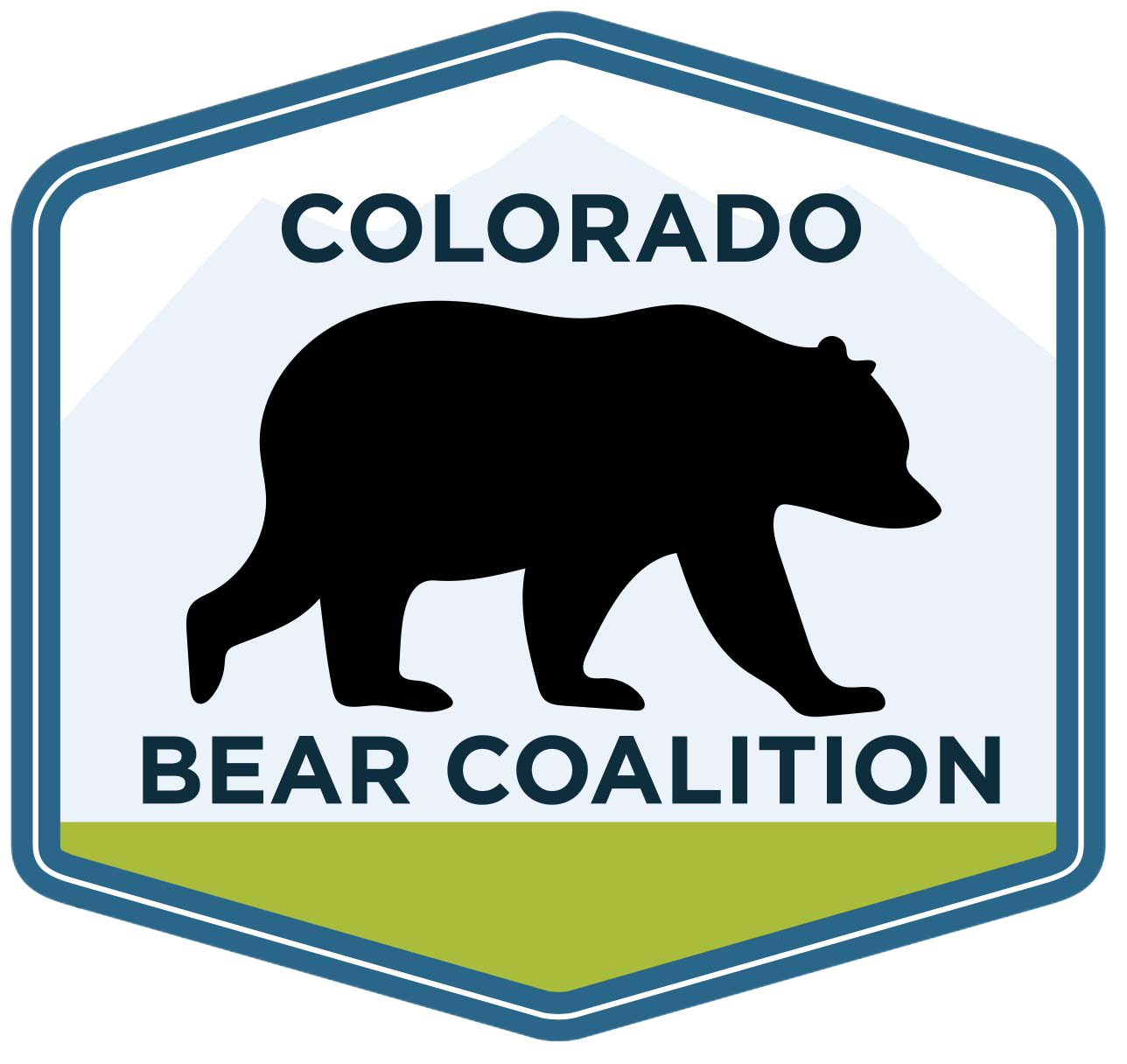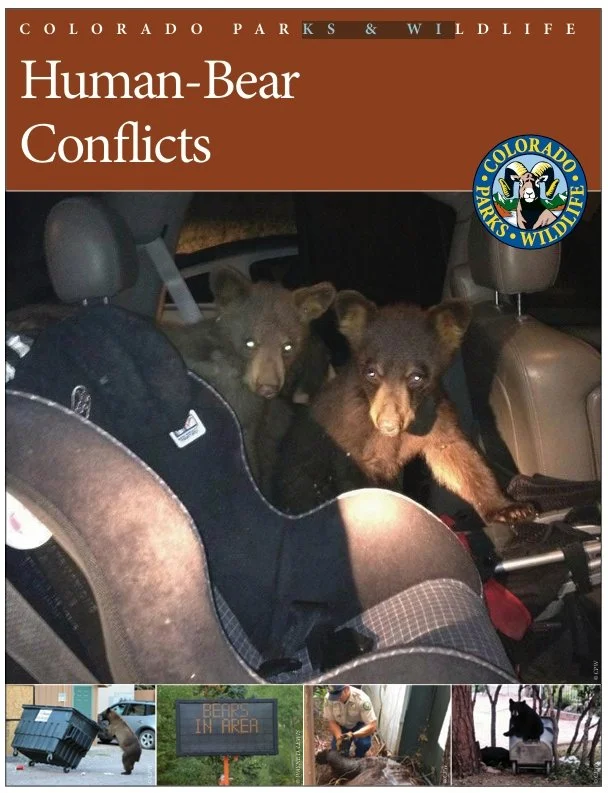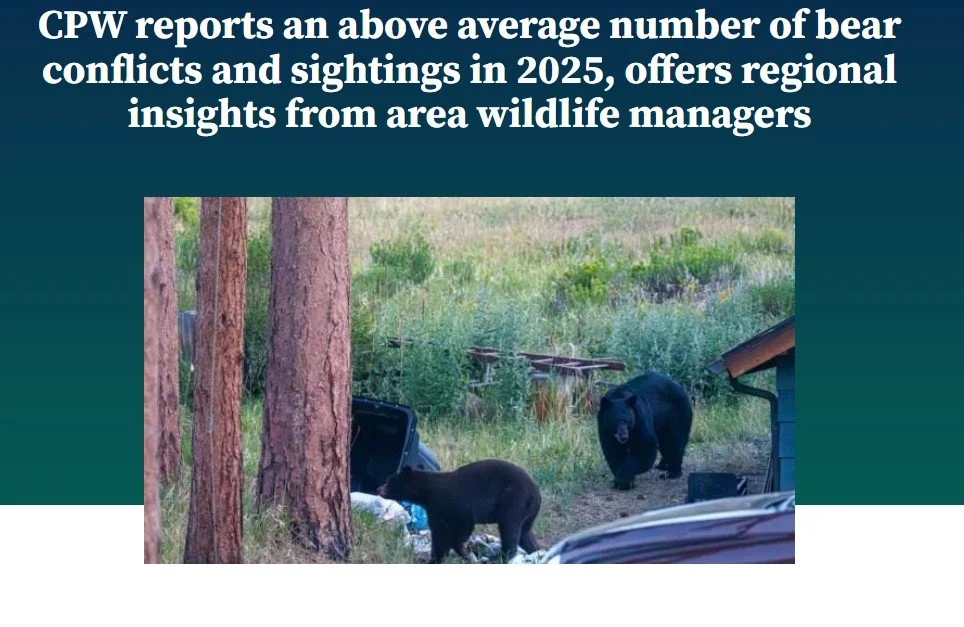
Wildlife Management
Wildlife Management in Colorado
Colorado Parks & Wildlife
Colorado Parks and Wildlife (CPW) is Colorado’s state agency charged with balancing the conservation of wildlife and habitat with the recreational needs of the state.
CPW is charged by statute to protect, preserve, enhance, and manage wildlife for the use, benefit and enjoyment of the people of this state and its visitors.
CPW regulations are created by the Parks and Wildlife Commission. CPW officers enforce those regulations, as well as season dates, bag limits, and license requirements.
CPW facilitates wildlife management objectives such as:
Determining the numbers and types of wildlife taken
Providing opportunities to hunt, fish, or engage in other wildlife-related recreation
Colorado Parks and Wildlife Commission
The Colorado Parks and Wildlife Commission is a citizen board, appointed by the Governor, which sets regulations and policies for Colorado’s state parks and wildlife programs.
The 11 voting members of the commission represent:
3 members who are sportspersons
1 of whom must be an outfitter
3 agricultural producers
3 recreationalists, including one from a non-profit, non-consumptive wildlife organization; two at-large members.
Members are expected to represent all parks and wildlife-related issues, regardless of their affiliation. A minimum of four commissioners must be from west of the Continental Divide.
Meeting Schedule:
The Parks and Wildlife Commission typically meets eight scheduled times a year.to consider changes to Colorado Parks and Wildlife regulations. Public comments are welcome at any point. Meetings are generally two days long and are held over zoom and in person in different locations across the state. .
For information on 2025 and 2026 meeting schedule, past meeting recordings and how to speak publicly at a meeting, go here.
Bear Management in Colorado
House Bill 15-1304 called on Colorado Parks and Wildlife to provide information regarding the growing number of human-bear interactions and conflicts throughout the state, and to evaluate all available management options to properly manage black bear populations year-round to address bear-human conflicts and public safety.
This report outlines all of the state directives that must be followed when managing human-bear conflicts. Read the report here.
Administrative Directive W-2, Black Bear Incidents - This directive sets forth procedures to be followed in the control and prevention of black bear damage and for addressing public safety issue situations. There are three distinct categories of black bear incidents as determined by CPW personnel, each with their own management considerations: (1) Nuisance Bears, (2) Depredating Bears and (3) Dangerous Bears.
For full definitions of each, see page 10.
Relocation / Euthanization / 2-Strike Policy
CPW Administrative Directive W-2 sets forth procedures to be followed in the control and prevention of black bear damage and for addressing public safety issues.
According to Directive W-2:
Nuisance Bears are bears which pose an immediate threat or damage to property, but do not threaten public safety
Dangerous Bears are bears which pose an immediate threat to human health and safety.
“2-Strike Policy” Officers have discretion to deal with bear conflicts as follows: If a bear has been captured and handled for any of the above conflict situations a second time, the bear must be destroyed - commonly referred to as the “two-strike” policy.
The above information can be found on page 10 & 11 of the CPW Human Bear Conflict Report.
Relocation
If a bear is found in an inappropriate location (e.g. too far into town), or they have engaged in episode(s) of “nuisance” behavior (e.g. multiple visits to town), CPW may decide to tranquilize, ear tag and relocate the bear. The first time that a bear is handled by CPW is widely known as the first strike.
Unfortunately relocation rarely works, as relocated bears typically return to the area where they were tagged, or they are hit by a car trying to return.
Euthanization
If a bear that has been tagged and relocated is physically dealt with again (tranquilized or trapped due to inappropriate location or nuisance behavior), the bear will be killed. The second time that a bear is handled by CPW is widely known as the second strike.
This policy of killing a tagged bear has become known as CPW’s 2-Strike Policy.
Bears that pose a public safety risk will be put down regardless of whether they have ear tags or not.
CPW Annual Bear Reports
Colorado Parks and Wildlife reports human and bear conflicts are on the rise across Colorado.
2022
Read 2022 Report HERE
2022 Colorado Bear Sightings and Conflicts Map
2023
Colorado saw fewer human-bear conflicts in 2023 due to good natural food production compared to recent years.
Read 2023 Report HERE
2023 Colorado Bear Sightings and Conflicts Map
CPW reports an above average number of bear conflicts and sightings in 2024, offers regional insights from area wildlife managers.
2024
Read 2024 Report HERE
2024 Colorado Bear Sightings and Conflicts Map
In 2024, bear reports were highest in the Colorado Parks and Wildlife management area that includes Pitkin County, the western portion of Garfield County and the majority of Eagle County.
Colorado Parks and Wildlife Courtesy Photo
This year's total ranks as the highest since 5,392 in 2019 and exceeds the seven-year average of 4,583 bear-related conflicts and sightings reported to CPW.
Food availability continues to be a major driver of bears slowing their activity during the winter months
2025
Read 2025 Report HERE
CPW Commissioner Meetings: Bear Related Highlights
Colorado Parks and Wildlife Meeting 8/23/2024
Brenda Lee speaks at the CPW Commissioner meeting held in Colorado Springs. Her public comment discusses CBC’s proposal to create a statewide policy to reduce trash as the primary attractant bringing bears into urban areas.
Find Brenda’s public comment starting at 4:41., which prompted a valuable discussion among the commission, ending at 4:53
Colorado Parks and Wildlife Meeting 1/10/2024
Brenda Lee speaks at the CPW Commissioner meeting held in Denver. With a focus on introducing CBC.
Find Brenda’s public comment starting at 3:10.
Colorado Parks and Wildlife Meeting 3/10/2022
Based on Colorado Bear Coalition’s request, B-11 Bear Management Plan is moved from consent agenda item to discussion.
B-11 revolves around the management plan for human-bear conflict in area B-11 of the state of Colorado which includes the
cities of Aspen, Glenwood Springs and Crested Butte. The conservation revolves around the wording of the plan - mostly regarding
the average of human-bear conflicts in the plan not representing the data based average of conflicts.
Related materials:
CBC Suggestions for B-11 Black Bear Management Plan
Colorado Parks and Wildlife Meeting 1/13/2022 - Agenda 30
Agenda 30 discusses Area B-11 Roaring Fork and Eagle Valley Bear Management Plan. In response to public feedback, CPW officers changed their original proposal recommending increasing bear harvest as a means of reducing human bear conflict to instead look to communities to reduce trash and other attractants. B-11 will have 5 years to reduce human-bear conflict reports. If this fails, the original plan of increasing hunting will take place.
Related materials:
B-11 Black Bear Management Plan Roaring Fork and Eagle Valley Version 1, 10/11/21 (pre public comment)
B-11 Black Bear Management Plan Roaring Fork and Eagle Valley Version 2, 12/20/21 (post public comment)
Kristin Cannon, CPW Northeast Region Deputy Regional Manager, speaks about a one million dollar grant to help prevent human-bear conflicts. Brenda Lee, executive director of Colorado Bear Coalition, is on the advisory board in charge of reviewing and awarding grant recipients.
Colorado Parks and Wildlife Meeting 1/13/2022 - Agenda 31
Agenda 31 discusses Area B-12 in relation to the Gunnison Basin Bear Management Plan. The primary focus of this section highlights how well the Gunnison Basin has done in reducing bear-human conflicts in contrast to the similar and close proximity area of Aspen. Main points as to why the Gunnison Basin has succeeded in places Aspen hasn’t has to do with topography, elevation and a smaller population density.
Colorado Parks and Wildlife Meeting 1/12/2022 - Agenda 13
Agenda 13 discusses Chapter W-2 “Big Game”. The primary focus of this agenda is to review annual changes to hunting season dates along with limited license areas, quotas and manner of take provisions for multiple species including: bighorn sheep, mountain goat, deer, elk, pronghorn, antelope, moose and bear. In specific relation to bears, the agenda discusses Over-the-Counter, Private-Land-Only rifle bear season for units 4, 5, 12, 13, 14, 23, 24, 33, 214, 441 from October 1st through the end of the concurrent 4th rifle season.








